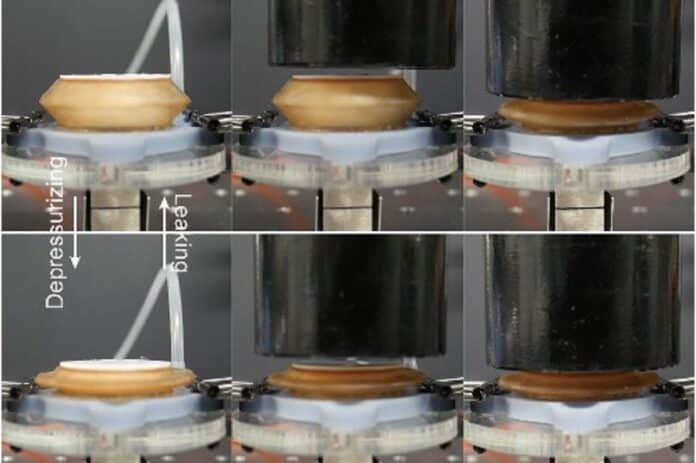The simple sponge-jamming device can help stiff robots handle delicate goods with care by simulating a human’s slight touch or stiffness.
Robots can skip, hop, and turn around, yet they are too inflexible to grasp an egg without difficulty. Devices with variable stiffness could be used to increase the load-carrying capacity of soft robots or improve contact compliance on hard robots to prevent damage.
This study, published at the IEEE International Conference on Robotics and Automation (ICRA) 2023, demonstrates that a silicone sponge can achieve variable stiffness.
Tianqi Yue of Bristol’s Department of Engineering Mathematics, the study’s lead author, explained that stiffness is significant in touch scenarios because robotic arms are too rigid to achieve such a gentle human-like hold on delicate objects.
Industrial robots can use this device to grab jelly, eggs, and other fragile objects. It can also be used to make human-robot interaction safer in service robots.
The fact that humans have soft tissues protecting rigid bones is a natural mitigating mechanism, distinguishing us from robotic arms.
Mr. Yue said, “We managed to use a sponge to make a cheap and nimble but effective device that can help robots achieve soft contact with objects. The great potential comes from its low cost and lightweight.
He also said, “We believe this silicone-sponge-based variable-stiffness device will provide a novel solution in industry and healthcare, for example, the tunable-stiffness requirement on robotic polishing and ultrasound imaging.”
Silicone sponge is a low-cost and simple-to-manufacture material. It is a porous elastomer, similar to the cleaning sponge used in daily duties.
Squeezing the sponge stiffens it, which allows it to be converted into a variable-stiffness gadget.
The researcher said, “In this paper, we managed to develop a soft device with variable stiffness, to be mounted on the end robotic arm for making the robot-object contact safe.”
The researchers will now focus on changing stiffness in different directions, including rotation.
